HIFIMAN EF499 HiFi DAC Headphone AMP Review – Music Nectar Sweet Spot
HIFIMAN EF499 is a $299 USD Entry-Level R-2R DAC / Headphone Amplifier, with a powerful 4.35 W headphone output, and a full-black, vertical design. Given the price point, and the quality of the unit, we will also compare the EF499 with other similarly priced DAC / AMPs, including KAEI TAP-1 DACs (329 USD), Creative X5 (299 USD), and Aune X1s GT (349 USD).
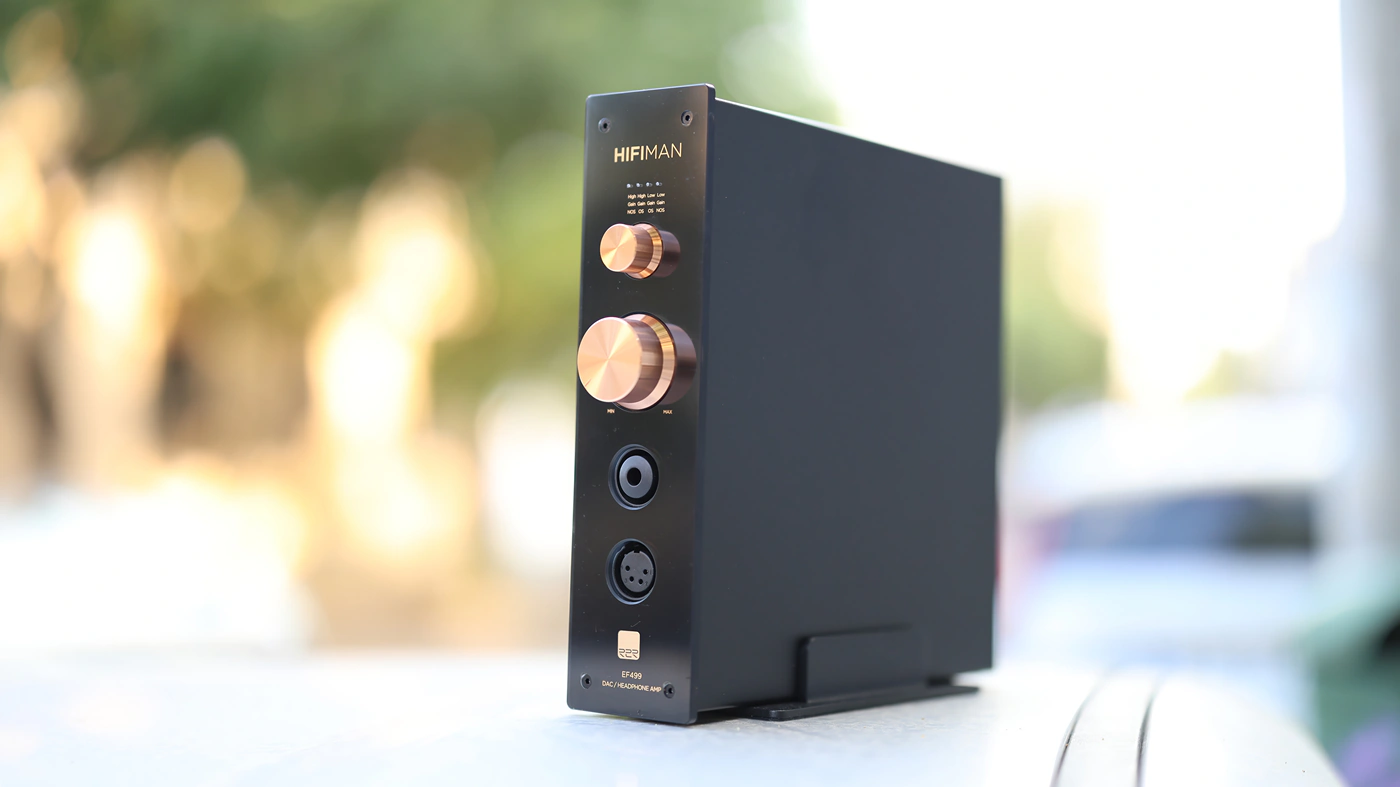
Introduction
There is nothing quite as impressive as reviewing HIFIMAN high-end products, so when I heard that they were creating an entry-level version of the EF400, I surely got curious, because EF499 despite having a higher number in the name compared to EF500 actually has a lower price point, and a vertical design, designed to stay upright and power your headphones as well as stereo systems. As an Amazon Influencer, I earn from qualifying purchases, and using the purchase links in my reviews helps me maintain this website and Youtube Channel. Huge thanks to HIFIMAN for providing us with the sample for this review.
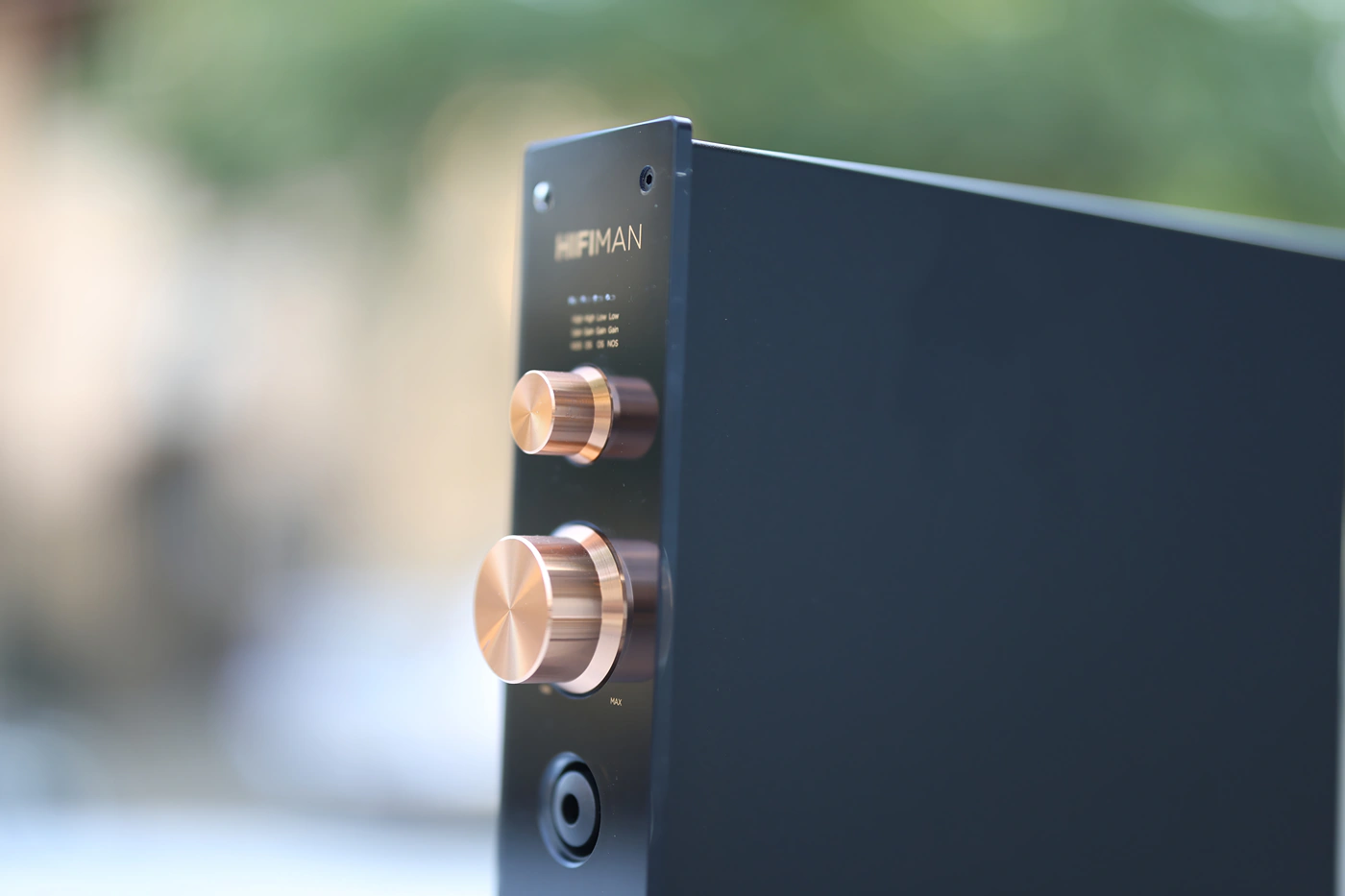
PROs – Ultra Strong Driving power with no audible background noise, strong streaming support that is seamless with Tidal and Spotify, Beautiful design and a reliable build quality, HIFIMAN’s legendary support, and a clean line out. The USB DAC function works very well and there is no DAC delay.
Cons – No volume control for the Line Out, High volume early, cannot select which output is active, they all play at once. Not made to be used with IEMs.
Product Link
Amazon – https://amzn.to/3U6lRrj
Aliexpress – https://s.click.aliexpress.com/e/_DF08C8H
Build Quality/Aesthetics
HIFIMAN EF499 is a high-quality DAC and Headphone Amplifier with both a USB DAC function and also support for Streaming media, and following requests from readers, this time around we are going to dig deeper and explore how it works like for streaming, and what you could do with the EF499, as well as how do you set it up. For the DAC part, the connection is simple, you use either the Coaxial or the USB input, and you have a selector to choose which you’re using. Although EF499 is noted to require a driver on the HIFIMAN Website, in my experience it works without one on Windows 11.
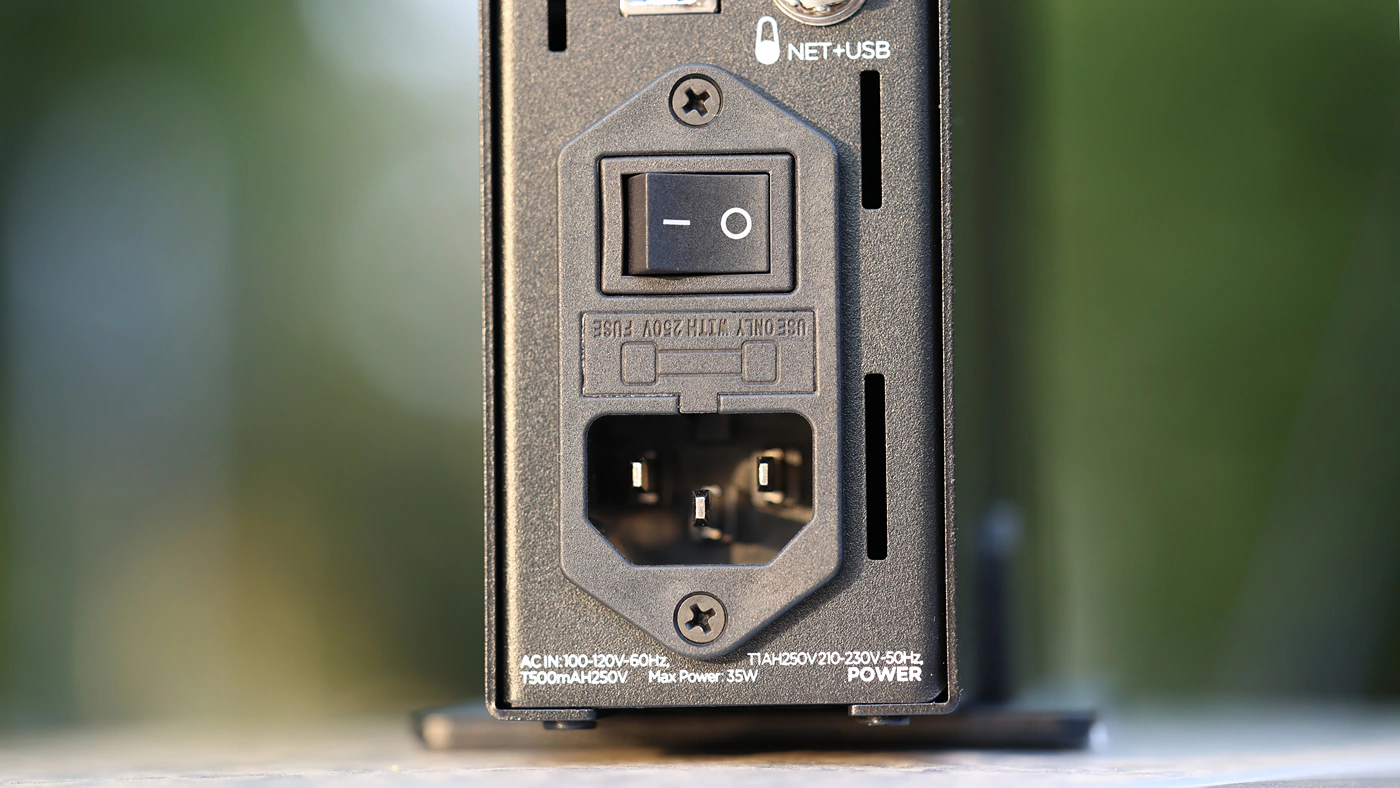
HIFIMAN EF499 will always output a signal to all the outputs at the same time, so if you have an RCA and a pair of headphones plugged in, both will play at the same time. There is no Preamplifier function, and if you are using the line out at the back, it will always output the signal at maximum volume, but the background noise level is lower than it was on EF400, to the point where it isn’t really audible when I am powering the Pylon Audio Diamond 30 mkii through the Topping B100 Monoblock Amplifiers.
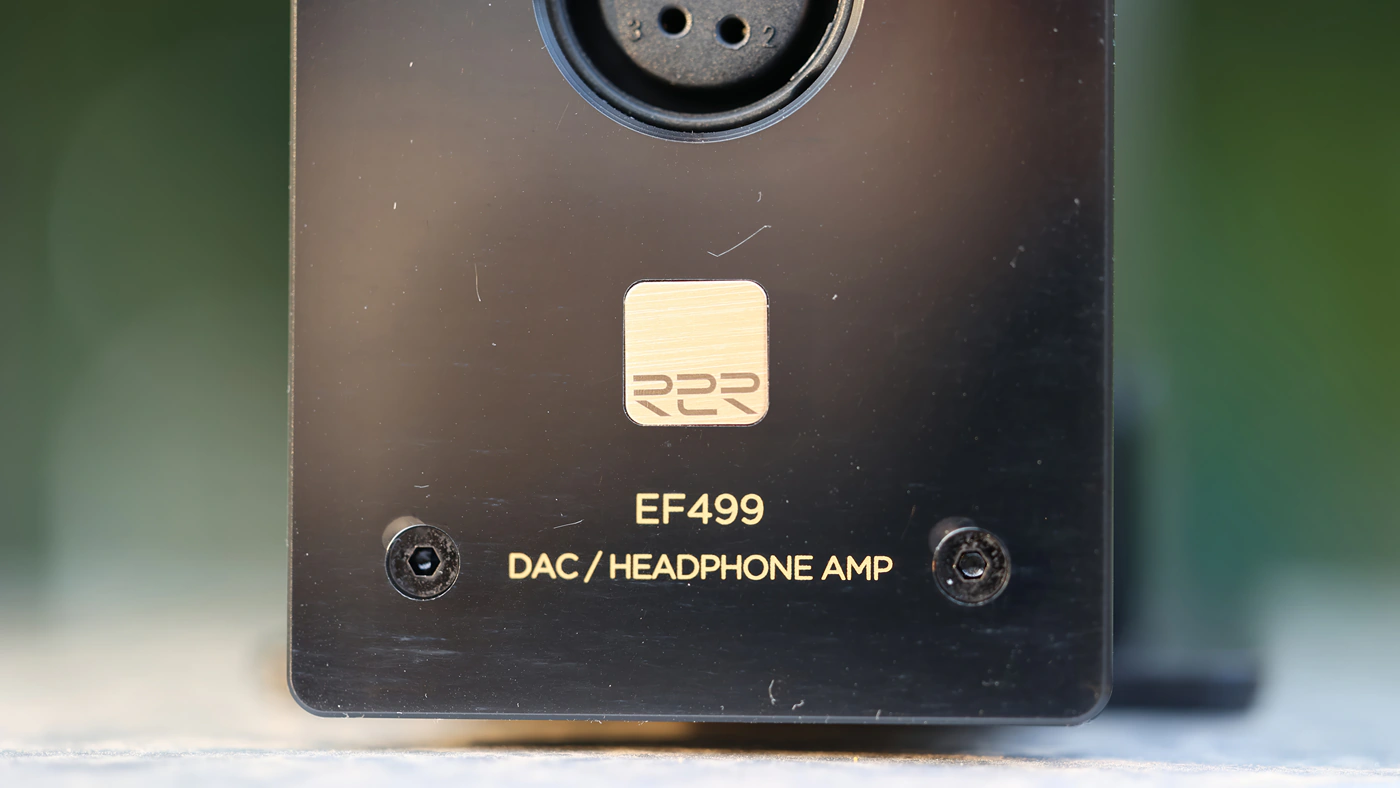
At the heart, we have an R2R DAC chip, and EF499 has a maximum driving power of up to 4.35W for the balanced headphone output. HIFIMAN advertises the EF499 as a headphone stand, but I personally would likely avoid using it as a stand to avoid scratching it or the headphones when placing them in and out. This being said, this vertical design does work well for the purpose, and the glass face is rather beautiful, while EF499 is very efficient space-wise taking very little desktop real estate.
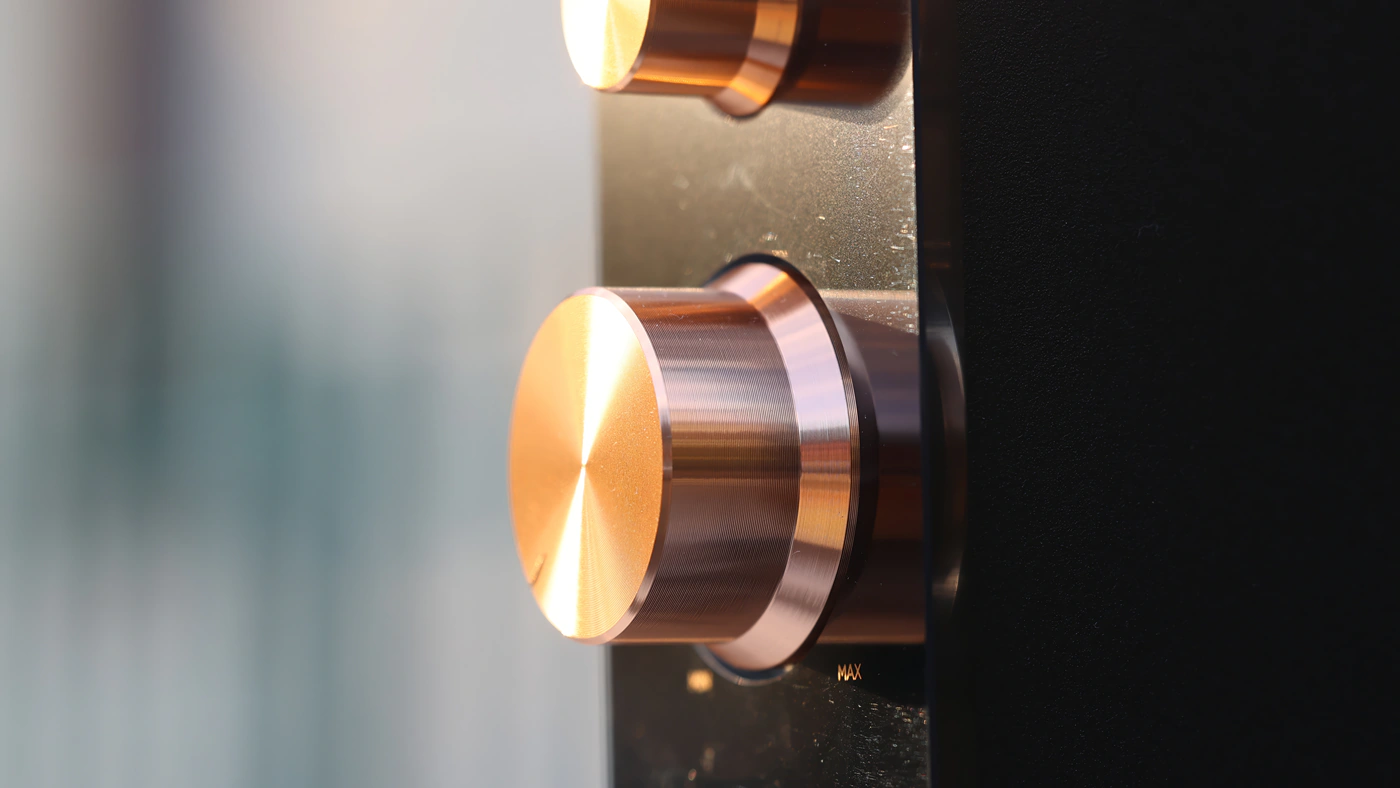
We have a black device with golden accents, with a wheel that turns for you to select the current gain level and OS / NOS filter. As with most R2R DACs, the differences between OS and NOS are much more noticeable than the differences between Delta-Sigma DAC filters, and that wheel is analogic, you can’t turn it forever and it doesn’t cycle the results. The big golden wheel at the center is the volume control, which only works for the headphone amplifier, while below it we have both a large 6.35 headphone amplifier, and an XLR 4-Pin balanced headphone output.
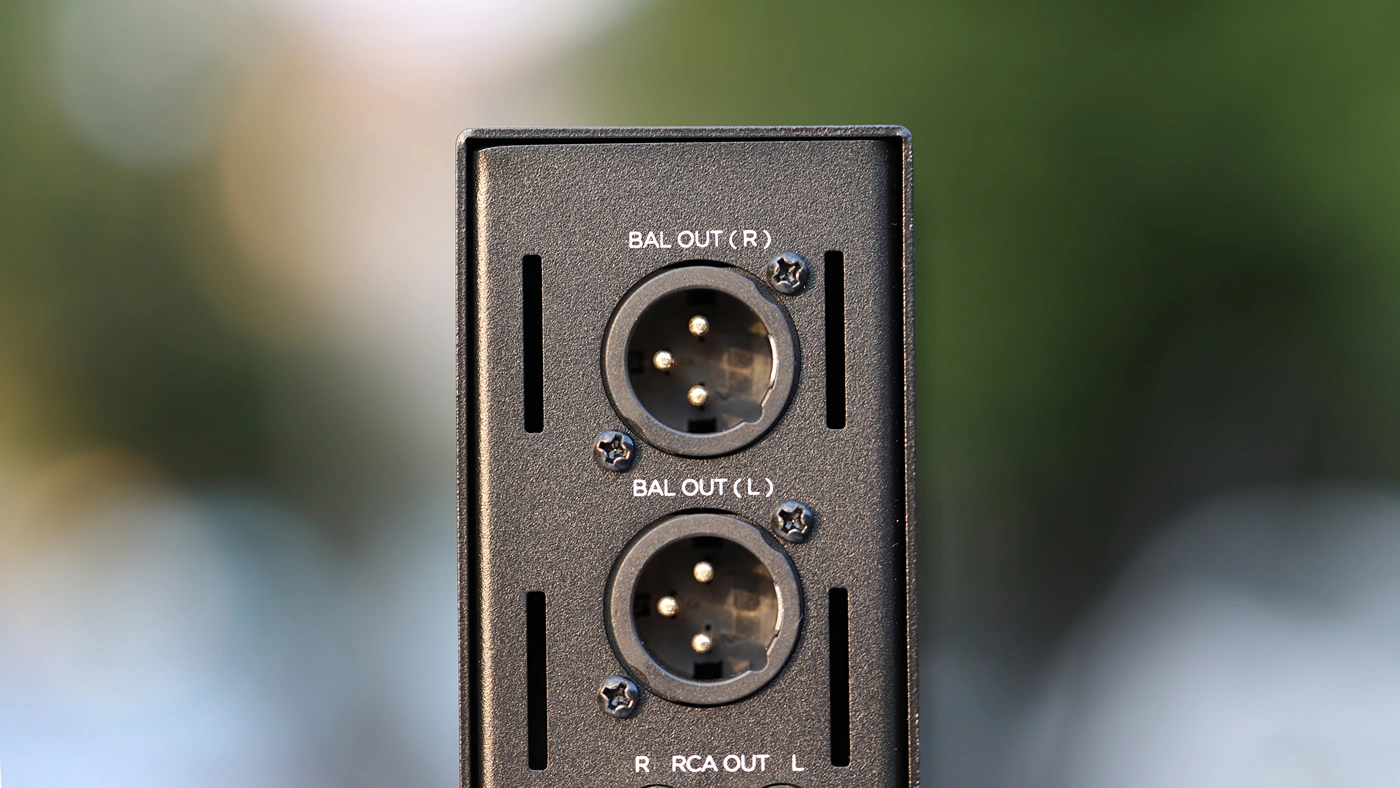
At the back, things get more interesting and for line outs, we have both XLR and RCA Line Outs, and for the inputs, we have Network Ethernet, Type-C USB Input, type-B USB Input, Coaxial input, and a switch to select between the Coaxial or NET + USB Inputs. Below those there is a Power Switch and a Power Connector with a Fuse. It is important to keep in mind that you can mainly turn the EF499 on and off using the power switch at the back, and turning it on and off will result in a pop noise in your speakers. While with most amplifiers that have a PRE this is not an issue, for Keces S300+ and for Topping B100 Mono Blocks or for Fosi Audio V3 mono, it makes the speaker driver move and creates a loud bang sound when you turn the EF499 on and off.
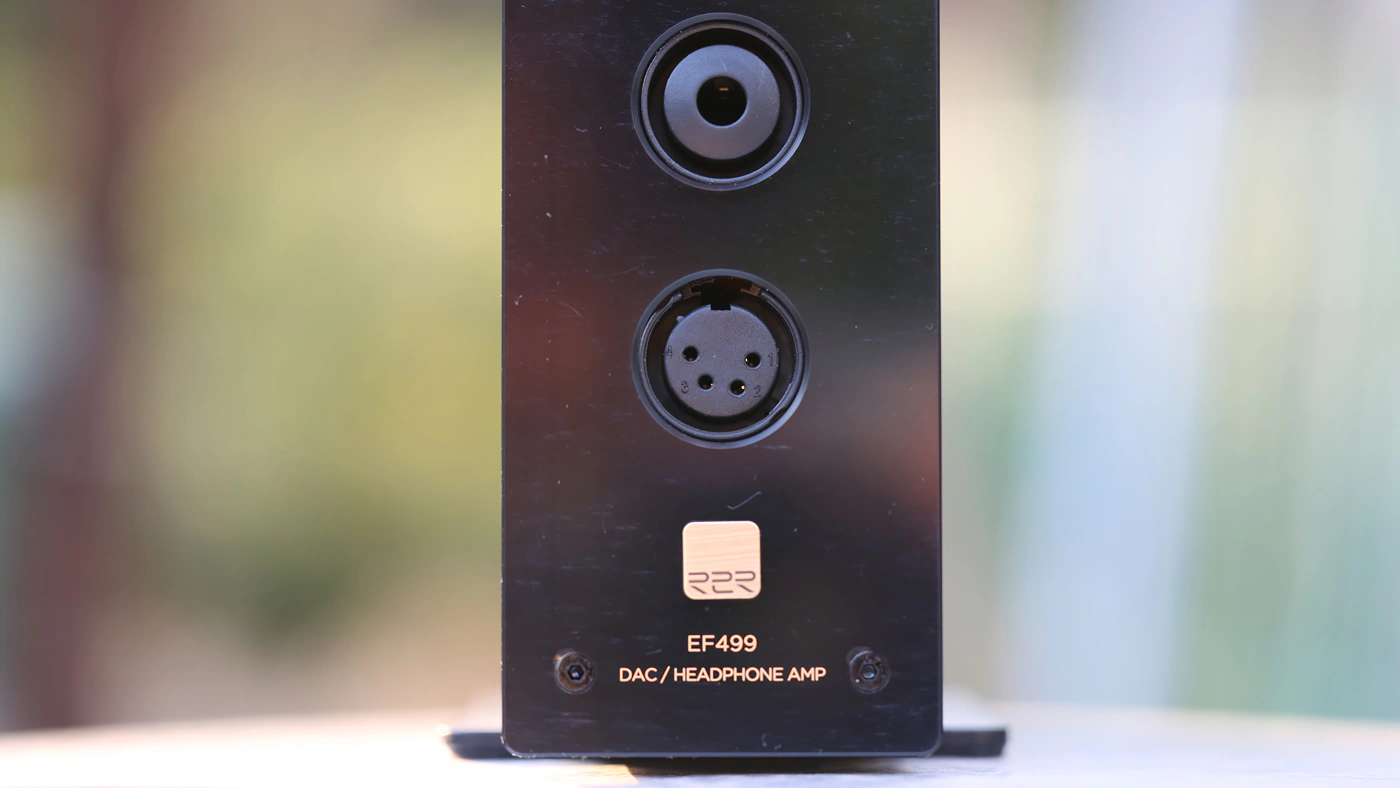
Technically, the unit is very solid, and we have a THD+N of 0.008% at 0dB, with a Channel Separation of 95 dB with a margin of error of 3dB., The SNR of Signal To Noise Ratio is 99 dB, A Weighted with an AP Open Loop Test, and the maximum output power is extremely high at 4.35 WPC for a 32 OHM impedance over the balanced output, and 1.28 WPC for a 32 OHM Load for the Single Ended output. The weight of the unit is 3.3 KG, and it is extremely solid on my desk thanks to the wide support foot, which has a soft rubber on the inner side, keeping it incredibly stable. The unit has 220mm of height, 80mm of width and 150mm of depth.
Digital To Analog Converter, USB DAC Functions and Subjective Notes
Starting with my usage, I am really happy and excited to notice almost no audible background noise in normal operation when using the EF499 as a DAC for a large system, although having no PRE function and no volume control is a bit of a risk, as if my PC decides to make a mistake and set the volume too loud, I will hear that. Implementing a PRE in between EF499 and the speaker amplifier is recommended if the speaker AMP does not have an integrated PRE.
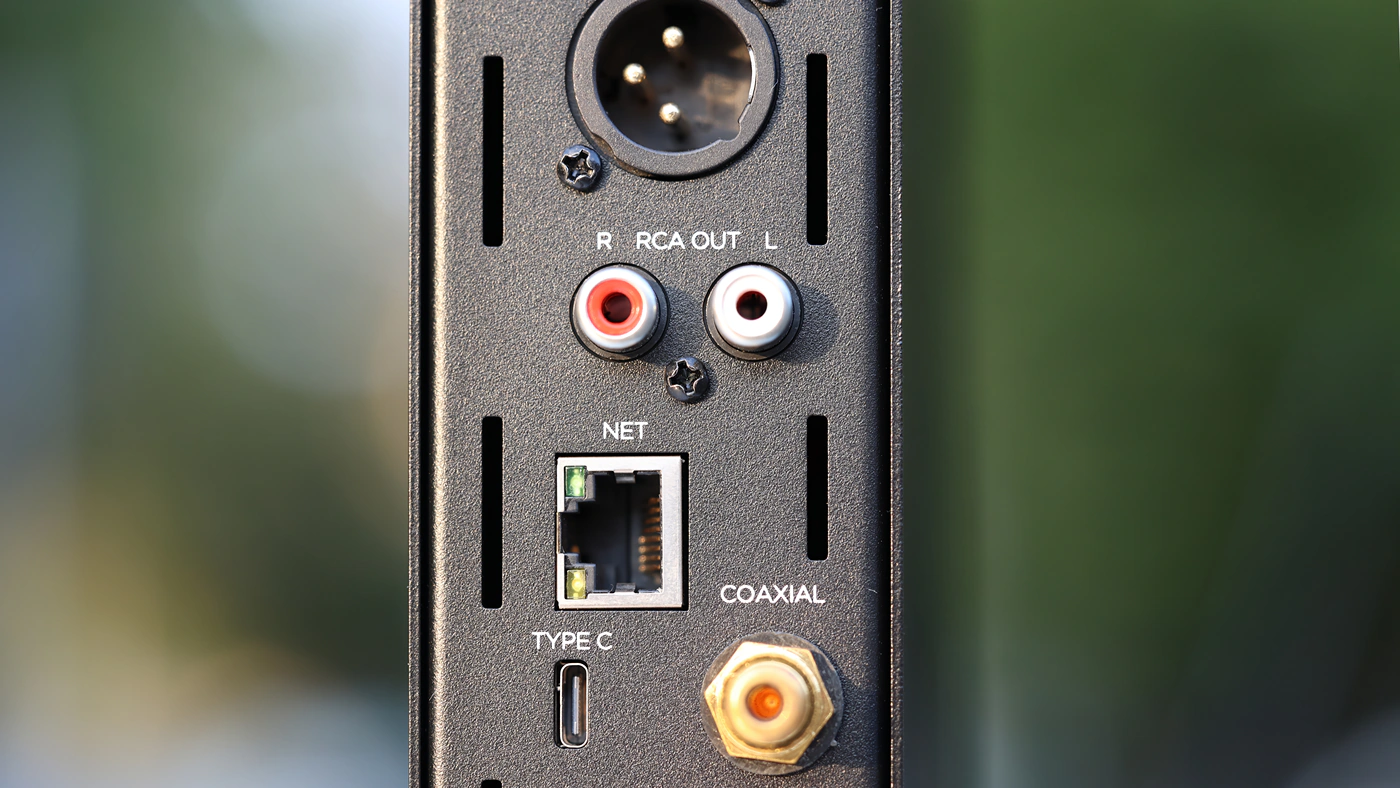
The balanced headphone output is not as versatile as the one on EF400, as it comes with a 4.4mm balanced headphone output, and a 3.5mm angle ended output, so we can see how some cost savings were possible to bring us the EF499 for a lower price than EF400. I am using a ddHiFi XLR44B Adapter to use the XLR output with a 4.4mm balanced cable, as most of my headphones do not come with a high-end XLR cable. Most if not all HIFIMAN Desktop DACs have a pure line out with no volume control, and most of them exhibit the pop noise when turning the DAC on or off, but EF499 consumes very little power in idle and runs super cool, so you could consider allowing it to stay turned on, instead of turning it on and off. Keeping it on also protects the circuits from a high inrush current which can damage it.
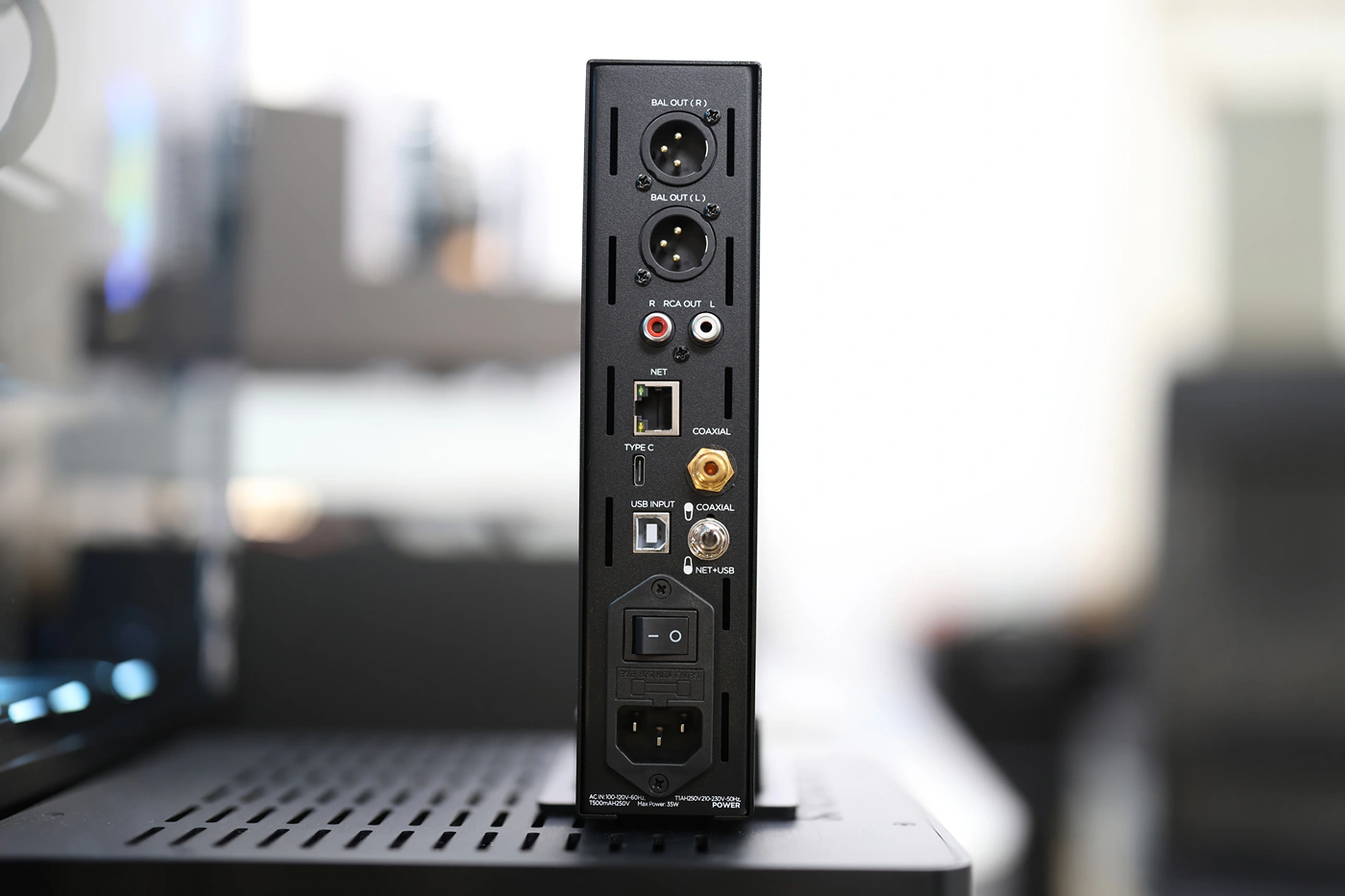
The USB DAC function is perfect, there is zero delay, and EF499 is adequate for playing games in real-time and watching videos or Anime, even Youtube Videos. I encountered no eros, no issues with it, but there is no detailed manual explaining how to use the Ethernet function, so I went ahead and connected EF499 to my router using an Ethernet cable. For most routes, you need to connect the EF499 to Port 2 if you have just port 1 occupied, and they are very picky about having ports occupied in the numerical order.
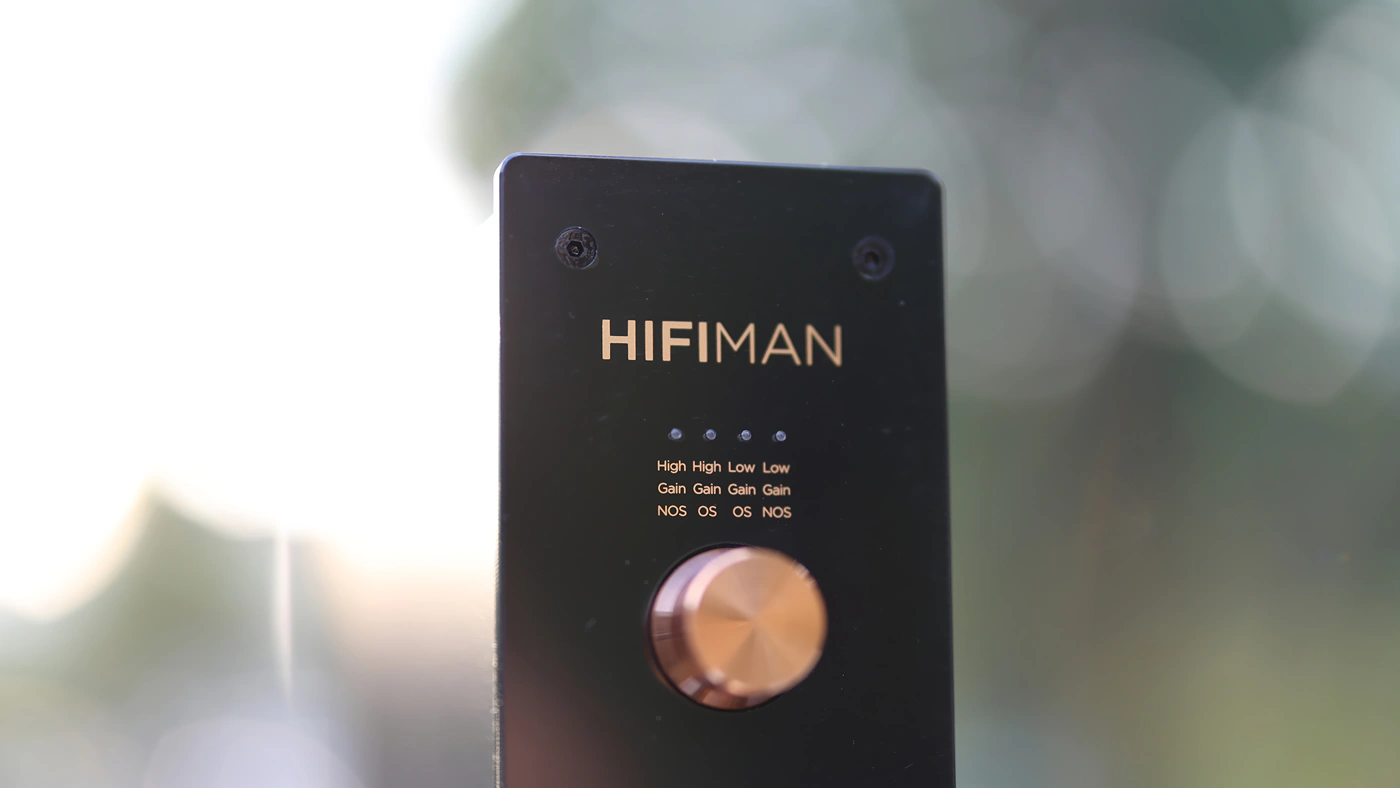
This part will apply to all HIFIMAN EF 499 and EF500 Desktop DACs as the Streaming part is integrated in the same way. Tidal Connect simply works, if you have your PC connected to the same router as EF499, you can select it as the output and it simply starts singing. Loving the ease of work. HIFIMAN made a good video here – https://www.youtube.com/watch?v=dg3aV5xAoPA . Spotify Works the same way. This is named Tidal connect in the case of Tidal. To make the EF499 visible for your smartphone, you may need to have Tidal running on the computer as well.
Sound Quality
Pairings – To test the HIFIMAN EF499 I have paired it with a wide selection of headphones, including FiiO FT1, Audeze MM-100, Crosszone CZ-8a Enhanced, Crosszone CZ-10, Ultrasone Signature Pure, Erzetich Thalia, and HIFIMAN HE1000SE. As there is no reliable way to connect a pair of IEMs, I skipped over testing EF499 with IEMS. As a reviewer, I managed to burn one of my favorite pair of IEMS, the Sennheiser IE900, and I am currently waiting on them to be fixed, so for the moment I have to conform and if the designer did not want to make it possible to connect IEMS, I will just abide by their rule. There’s also the fact that the volume of EF499 is really high even at low volumes, it is plenty loud on low gain with both HE1000SE, and other headphones too, so there’s not much space to control the volume with IEMs. If you really think about it, it kind of makes sense that HIFIMAN would create a DAC AMP that works really well with headphones, as they mainly build headphones with just one wired IEM currently in production and a couple of TWS Earphones, everything else being a hard to drive full-sized headphone.
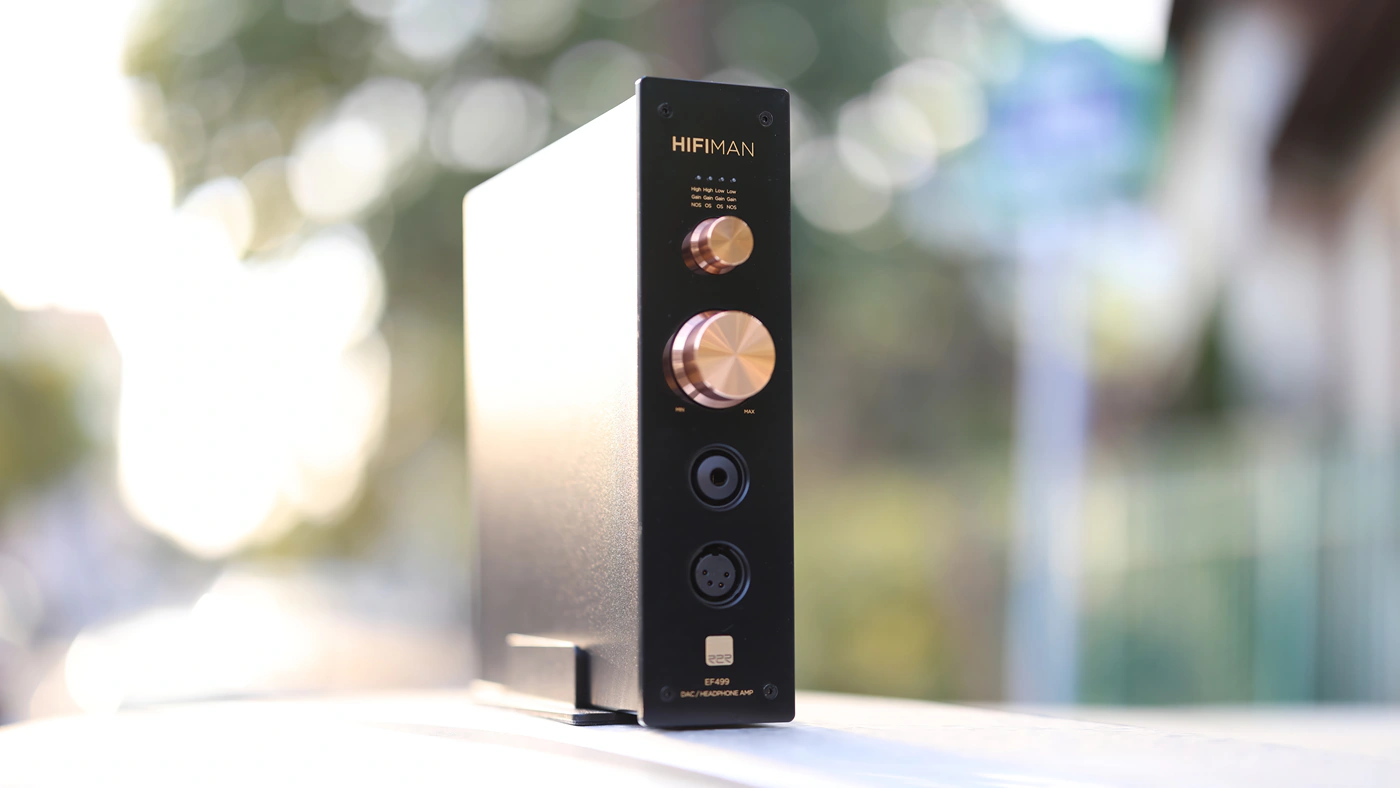
Overall Signature – The sound of the EF499 is warm, with a mid centric sweetness in the voices, a strong drive factor, a forward and aggressive sound that gives you the wheel, allowing you to feel like a racecar driver, increasing the energy, punch and impact of all songs played through it. I found really good pairings with dynamic headphones, including Sennheiser HD 490 PRO, Crosszone CZ-8a Enhanced and FiiO FT1. The pairing with Planar magnetic headphones is different, as EF499 creates a very strong and powerful sound that punches and kicks, but is really forward. The signature and tuning complements Ananda Nano and Arya Organic really well, but can be a bit too forward with HE1000SE, although there you have a higher degree of control, thanks to how hard to drive HE1000SE is. Regardless whether you’re using OS or NOS, the sound is very punchy and energetic, not characteristic of an R2R DAC overall, although it does have the softer texture typically associated with an R2R DAC.
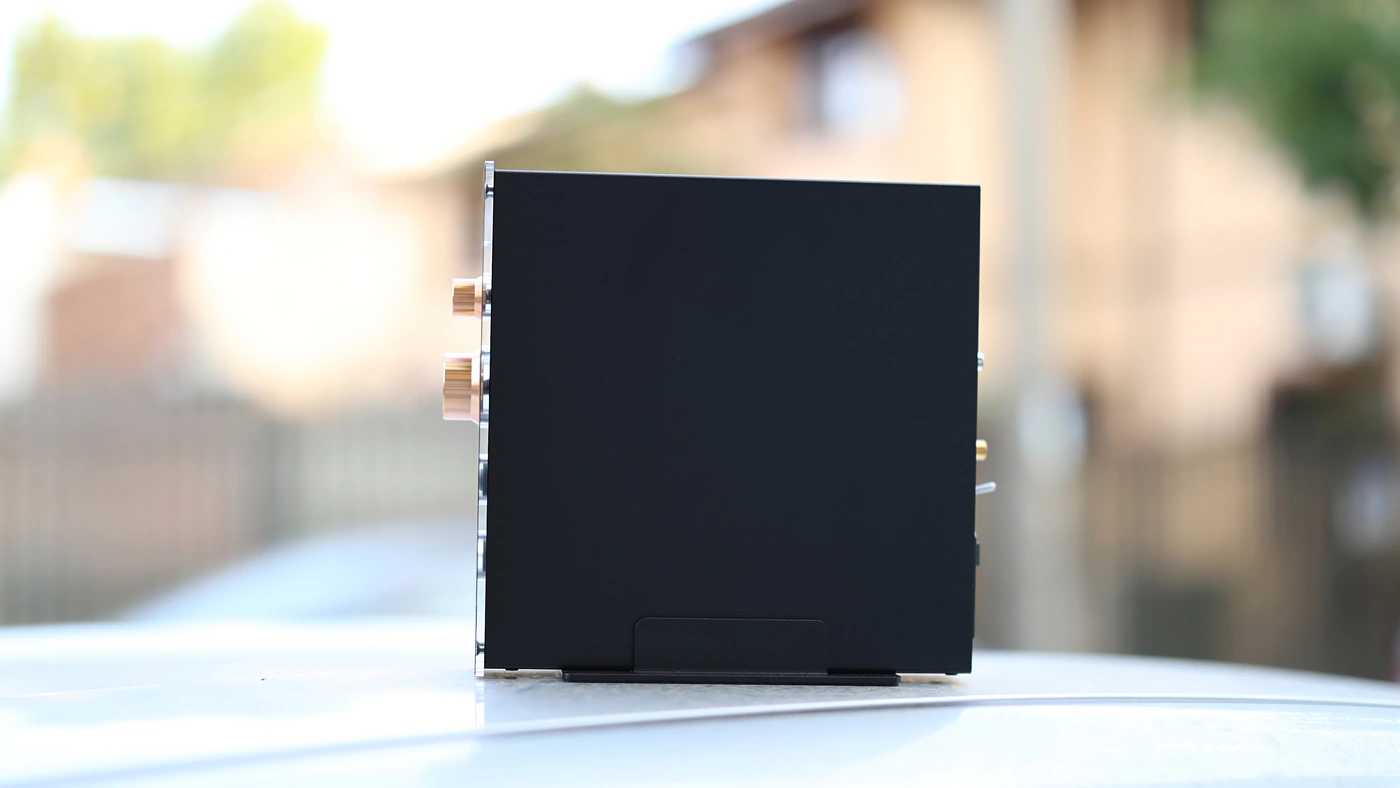
Bass – Starting with the low-end, HIFIMAN EF499 creates a warm, slightly slow but full bass that climbs down to 20 Hz just fine, but gives bass guitars body, and electronic bass notes a good amount of oomph and bloom, although the quantity is generally only slightly above the neutrality. The upper bass is controlled and not boomy. The bass is more than enough and satisfying for EDM, Rap and Pop music, but if the song is not overly warm and bassy, for example with metal, it stays mostly slightly above neutral.
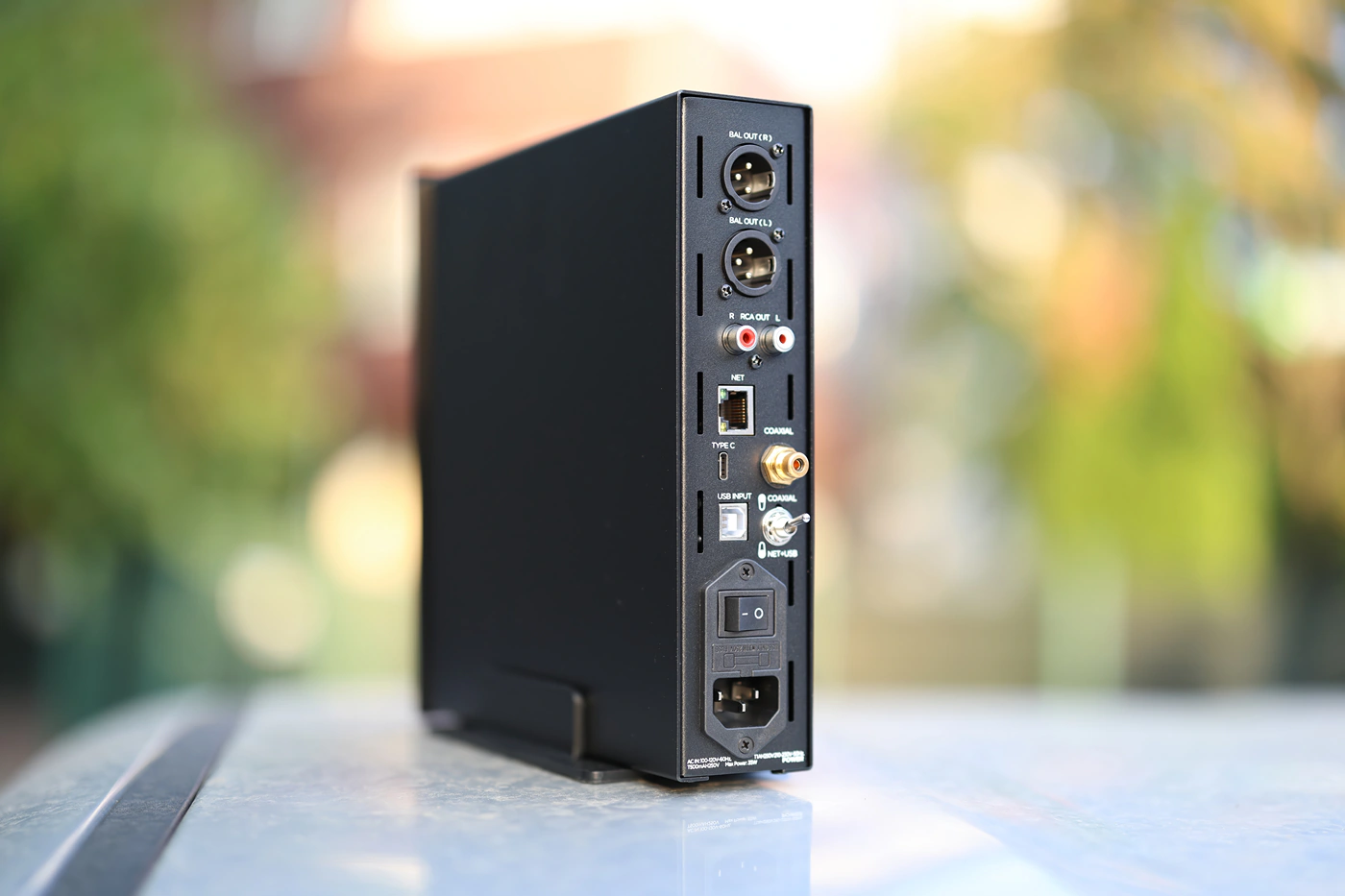
Midrange – The midrange is fairly natural, with a forward presentation of lead instruments and voices, projecting an intimate relationship between the singer and the listener, although the other instruments play far away from you. The volume you’re listening at will change the sound quite a bit, and at lower volumes the sound is really wide, even distant, and it can feel as if you’re not wearing any headphones, while at high volumes the sound is forward, in your face and engaging.
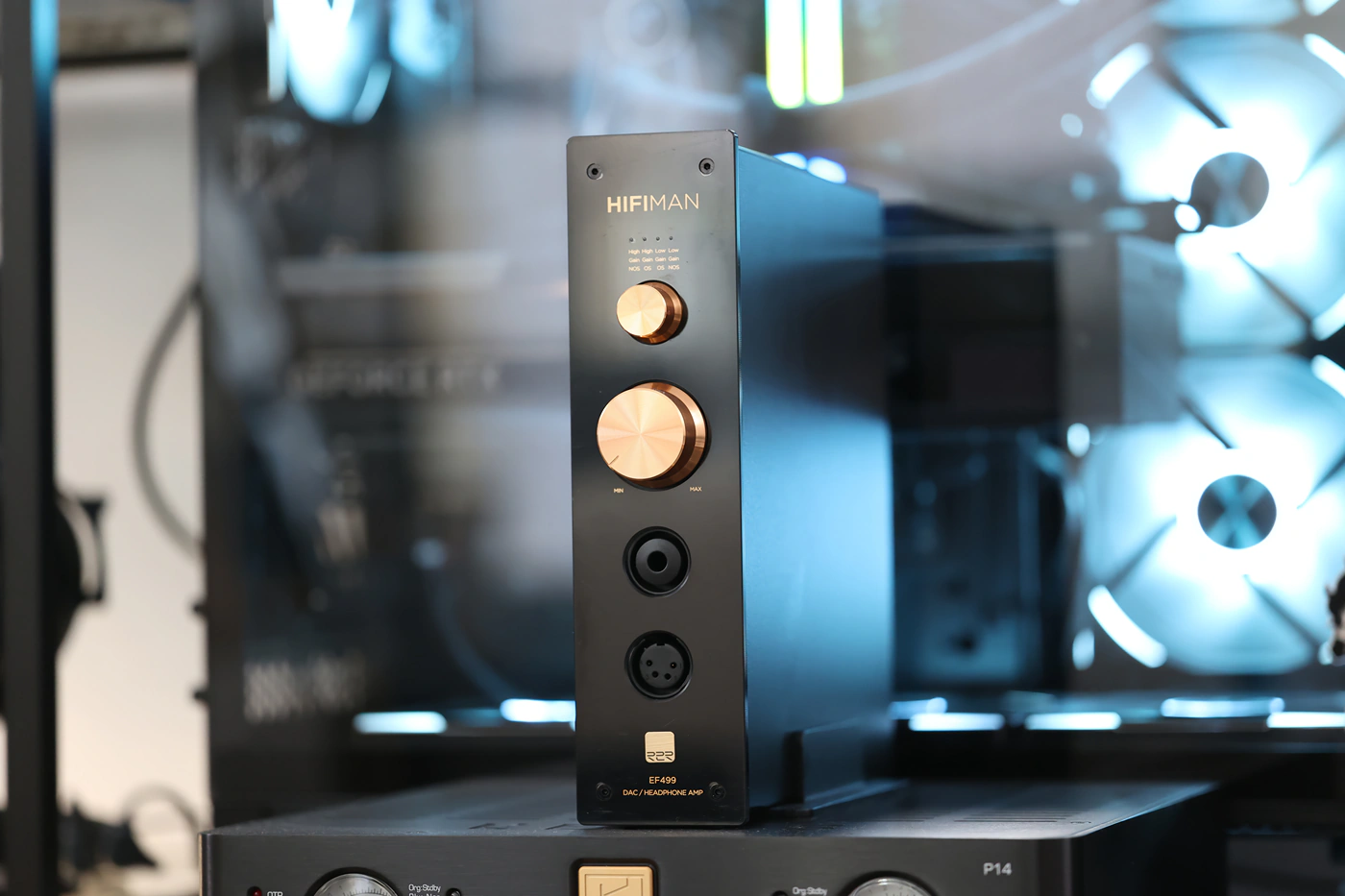
Treble – Topping the natural sound with a fairly crisp and sharp treble, EF499 creates a strong extension with air and a good amount of treble sparkle and brightness. This top end complements metal, rock and EDM really well, revealing detail and hidden information well, while keeping pop and other styles airy and energetic. EF499 is not a forgiving DAC AMP and will show your music collection as it is, brighter songs will sound bright, and it can reveal harshness easily.
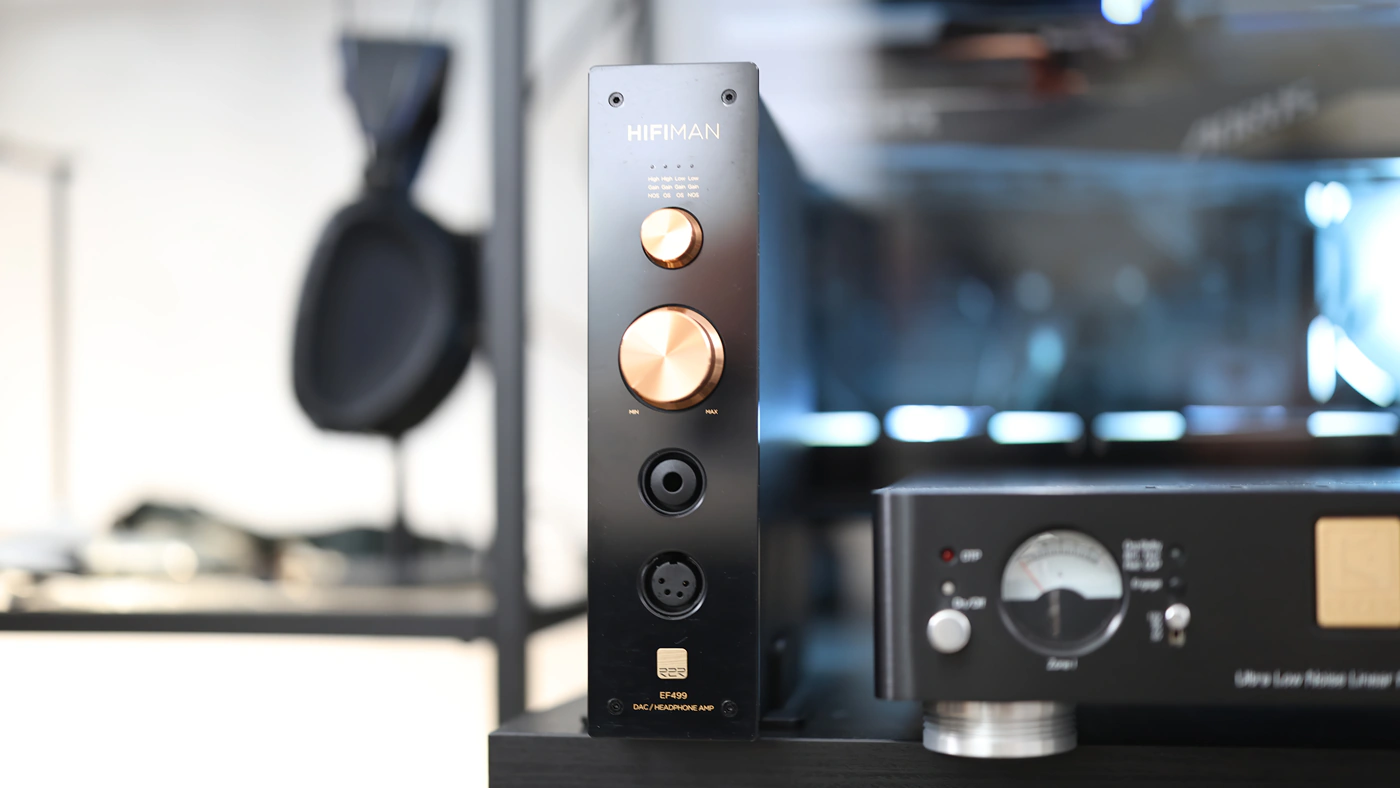
Volume Control – The higher you go in the volume, the more forward, more aggressive and direct the sound will get, and at quiet volumes, the sound will be wider, more relaxed and smoother. At higher volumes, the bass gets stronger. There is not a lot of volume control and I can’t go above 12 o’clock on low gain with most headphones, including the hardest to drive cans I have like HIFIMAN HE1000SE and Dan Clark Audio Expanse. The headphone output part always has the feeling that the drive and gain is set very high, while the line out seems to not have the same characteristic sound and instead always sounds free of noise and dynamic / punchy.
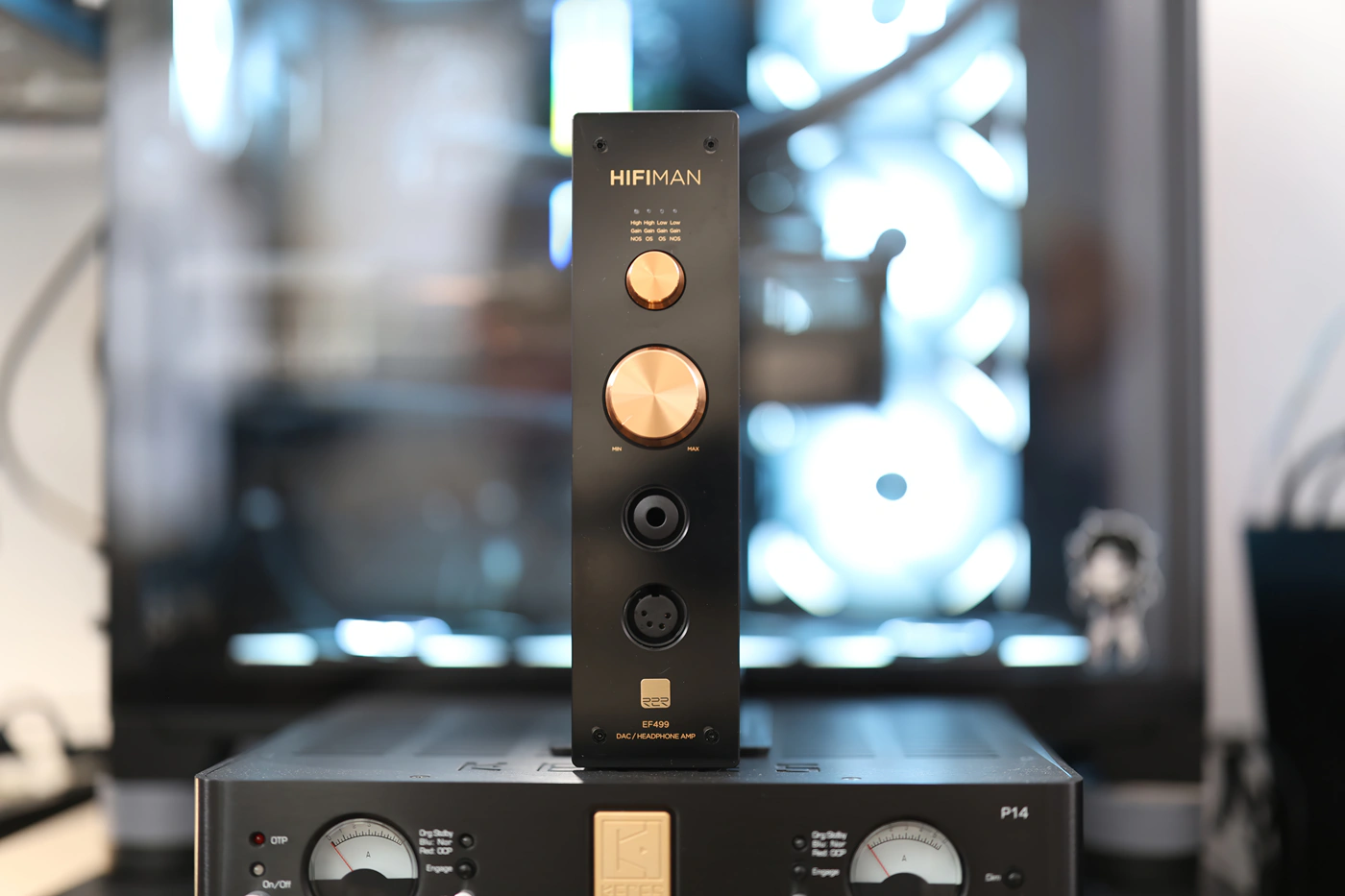
Dynamics / PRaT / Textures – The only part of the EF499 sound that is characteristic of the R2R DAC chip inside is the textures and the impulse response, both of which are on the slower side, as EF499 avoids sounding too harsh and too edgy. It has a smoother, richer texture that is strongly characteristic of an R2R DAC, regardless whether you’re using OS or NOS.
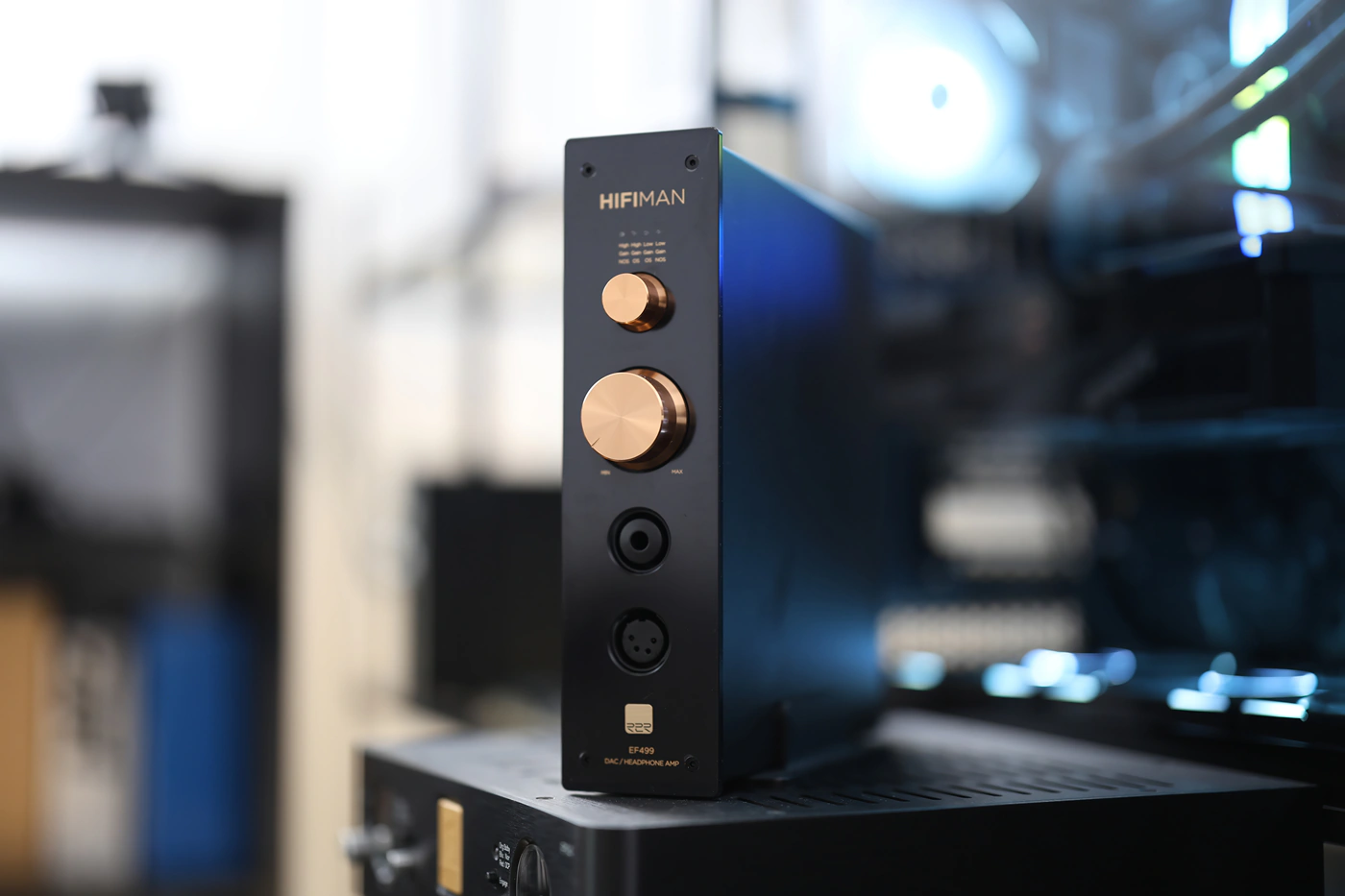
Soundstage – The soundstage is projected strongly laterally, and in the front of the listener, but all instruments are brought closer to you the higher you go in volume, EF499 creating a uniquely forward, strong and ballsy presentation that gives music life and power. It is perfect for rock and metal, for music you want to sound aggressive. This kind of sound easily reveals details that are lost when the soundstage is spread too much.
Gaming Usage
While I often feel like I am exaggerating recommend some high-end expensive equipment for gaming, EF499 is a versatile DAC / Headphone AMP that is likely to become a centerpiece for a gamer, being better than any embedded sound card, and better than most of the market around the price point, and it is a headphone stand too, so can easily become a central piece of a setup. The high number of inputs and outputs is useful for sure when designing a versatile setup, but it is best if you also have a pair of headphones from HIFIMAN, including Sundara, Arya Organic or Ananda Nano.
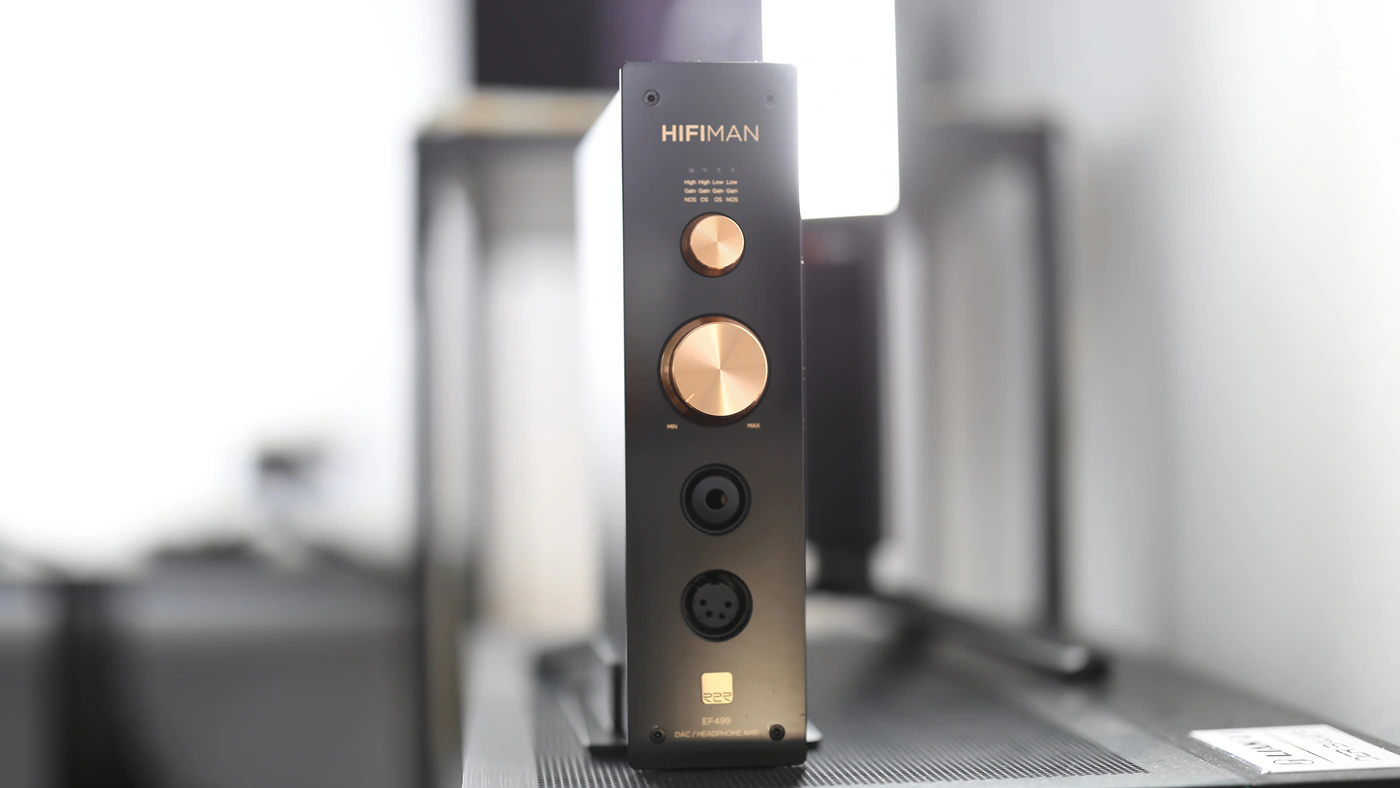
The sound is forward, punchy and engaging, it puts you right into action, gives you a good imaging and strong stereo separation, it creates the world around you and gives you the driver’s seat for enjoying each game, being much more suited for active games than idle games, so any shooter, strategy game, or game with a lot of gameplay will be ultra fun with EF499, while for Visual Novels, it is best if you turn the volume low to avoid a sound that’s too powerful and has too much drive factor for the relaxed environment typically associated with Visual Novels.
Comparisons
HiFiMAN EF499 vs Aune X1s GT (299 USD vs 349 USD)
Build – X1s GT is a good competitor, it is pricier, but has a good build quality, has both a single ended and a balanced headphone output, using the 4.4mm balanced headphone output standard, and it also has a more granular control, being able to control IEMS as well as headphones, but sacrifices the maximum driving power in the process, and EF499 is much more p[owerful and has a stronger kick. At the back, X1s GT has only RCA outputs with no balanced XLR outputs. While EF499 can do Tidal Connect and Spotify Streaming, X1s GT has Bluetooth. EF499 has a line out with no volume control, while X1S GT has both a Preamp output and a true line out, although both are RCA. Generally, the two are very complementary, one will better suit your needs. The background noise is much lower on EF499, and it is better suited for usage with desktop setups where noise would be audible.
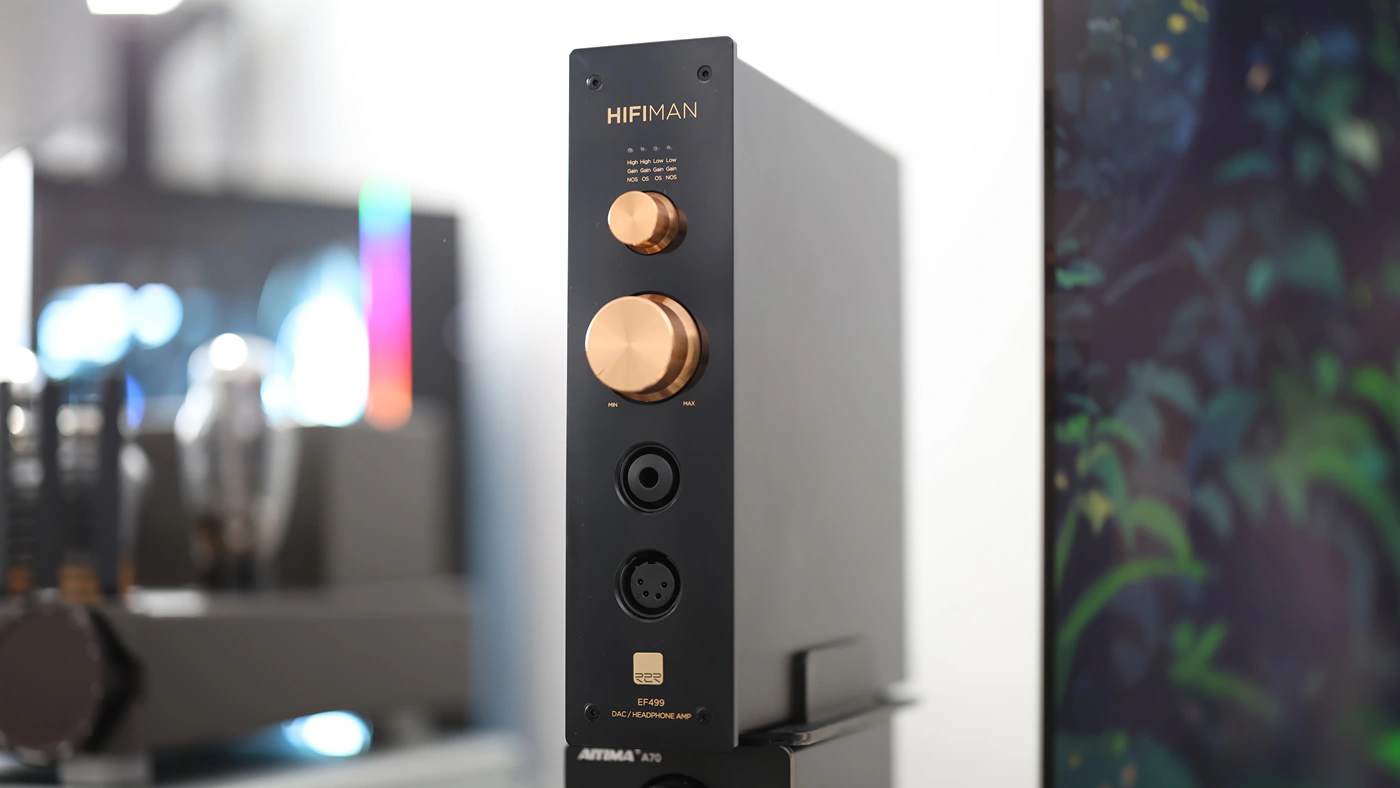
Sound – You can easily enjoy the kick and sound of both DAC/AMPs, but EF499 has a neutral / clean sound with a strong drive factor, and a good resolution, while X1S GT is ultra smooth, warm, bassy and has a less treble, creating a lush tuning that is best described as used to control sharp and bright headphones, while EF499 is more general and versatile, creating a more natural sound with less coloration. X1S GT is a favorite for those who need tons of bass, while EF499 has a strong bass extension, but it doesn’t cross into sounding colored, like x1s GT does.
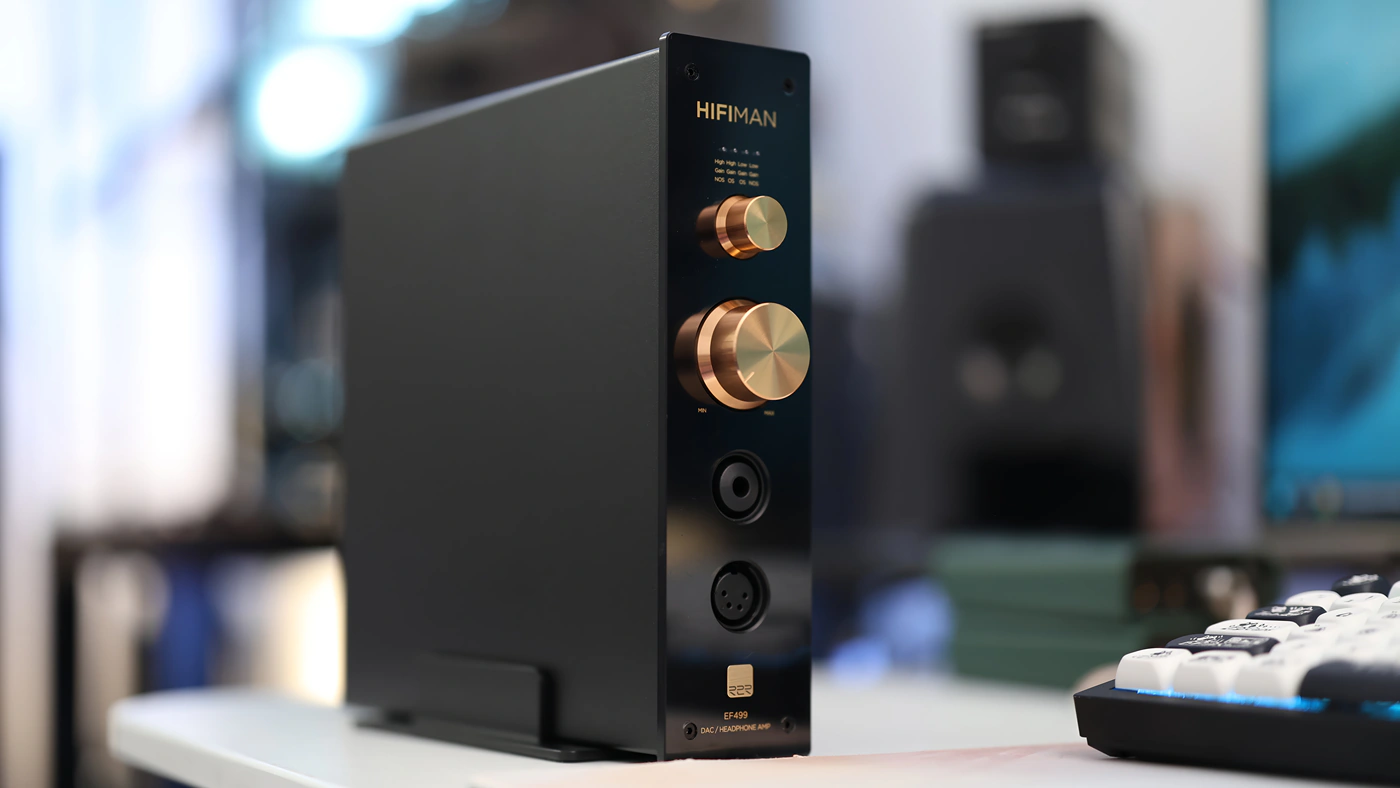
HiFiMAN EF499 vs Kaei TAP-1 DACs (299 USD vs 329 USD)
Build – KAEI TAP-1 is a portable Headphone AMP / DAC, but it is within the price point of EF499, and also has a good driving power, so many people wonder how the two compare. Starting with the build, impetus and outputs, you can do some fairly good streaming with EF499, which is not as directly possible with TAP-1 DACs. This being said, while EF499 uses R2R DAC tech, TAP-1 uses a tube AMP, each drawing the advantages of the tech, but TAP-1 draws in some of the tube downsides too, including the sensitivity to EMI and RFI, as well as sensitivity to microphonic noise.
Sound – The sound of the TAP-1 DACs is fuzzy, sweet and feels like an entry-level tube-based guitar effect pedal, it brings euphoria, happiness and sweetness to music, while sacrificing clarity and always sounds a bit overdriven. This can be very enjoyable, but it is not versatile, and here’s where EF499 shines best, it is a versatile desktop DAC / Headphone AMP, it sounds detailed, forward, but has a low distortion, has a much stronger and fuller bass, deeper extension and a higher extension in the treble with better clarity, and more instrument separation. Generally, EF499 is a much better Amplifier / DAC with a better build quality, but you’d be bound to a desk while using it, while TAP-1 can go anywhere you want to take it.
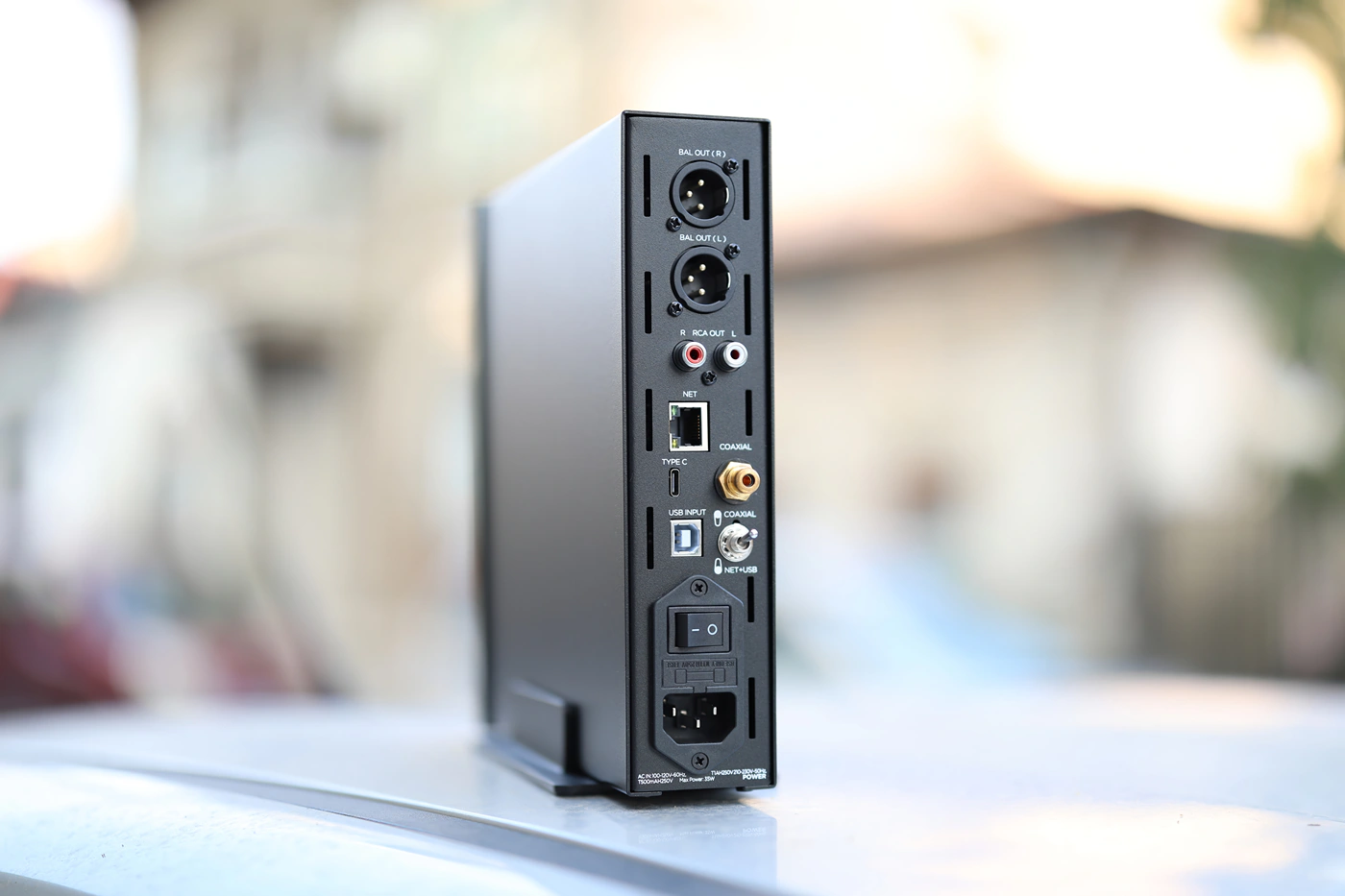
HiFiMAN EF499 vs Creative X5 (299 USD vs 299 USD)
Build – Creative X5 is about the same price as EF499, and the only plus it has is the 4.4mm balanced headphone output, and that it can theoretically drive IEMs, but the line out of EF499 is much cleaner and free of background noise, while the noise floor of X5 is easily audible both through the headphone output and the line out. There’s a lot of DSP processing possible with X5, but EF499 is purer in the sound, with more driving power and better control of all headphones, packing a stronger punch with all music styles. X5 is made of plastic and feels a bit cheap compared to EF499 which feels high-end and designed like a king.
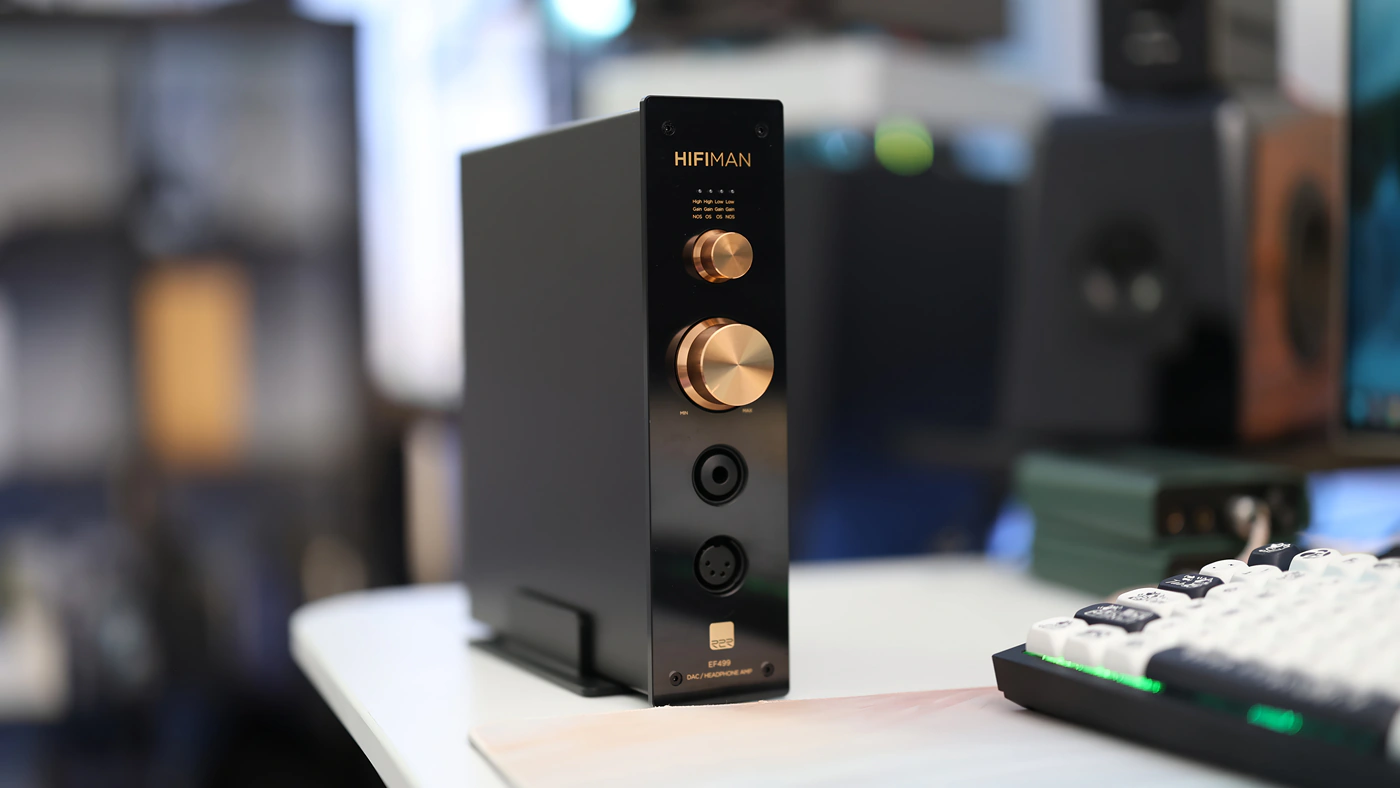
Sound – HIFIMAN EF499 has a more forward, more engaging sound with a warmer bass, stronger bass and sub-bass, and better extension in both the lows and the highs, creating a really engaging and punchy sound. Creative X5 sounds good too, with a higher dynamic range, but less resolution, and it sounds almost digital in processing, you can hear the fact there’s DSP at play almost always, while EF499 shows music as it is, it shows a more natural guitar tone, sweeter female voices, and deeper male voices.
Value and Conclusion
While a DAC / AMP like EF499 will undeniably be less exciting than the Serenade High-end option, at 299 USD, EF499 has a price / performance ratio that’s as high as Ananda Nano and Arya Organic, it is simply epic if you need a reliable desktop DAC / Headphone Amplifier with excellent sound, no background noise, and a reliable DAC with streaming too.
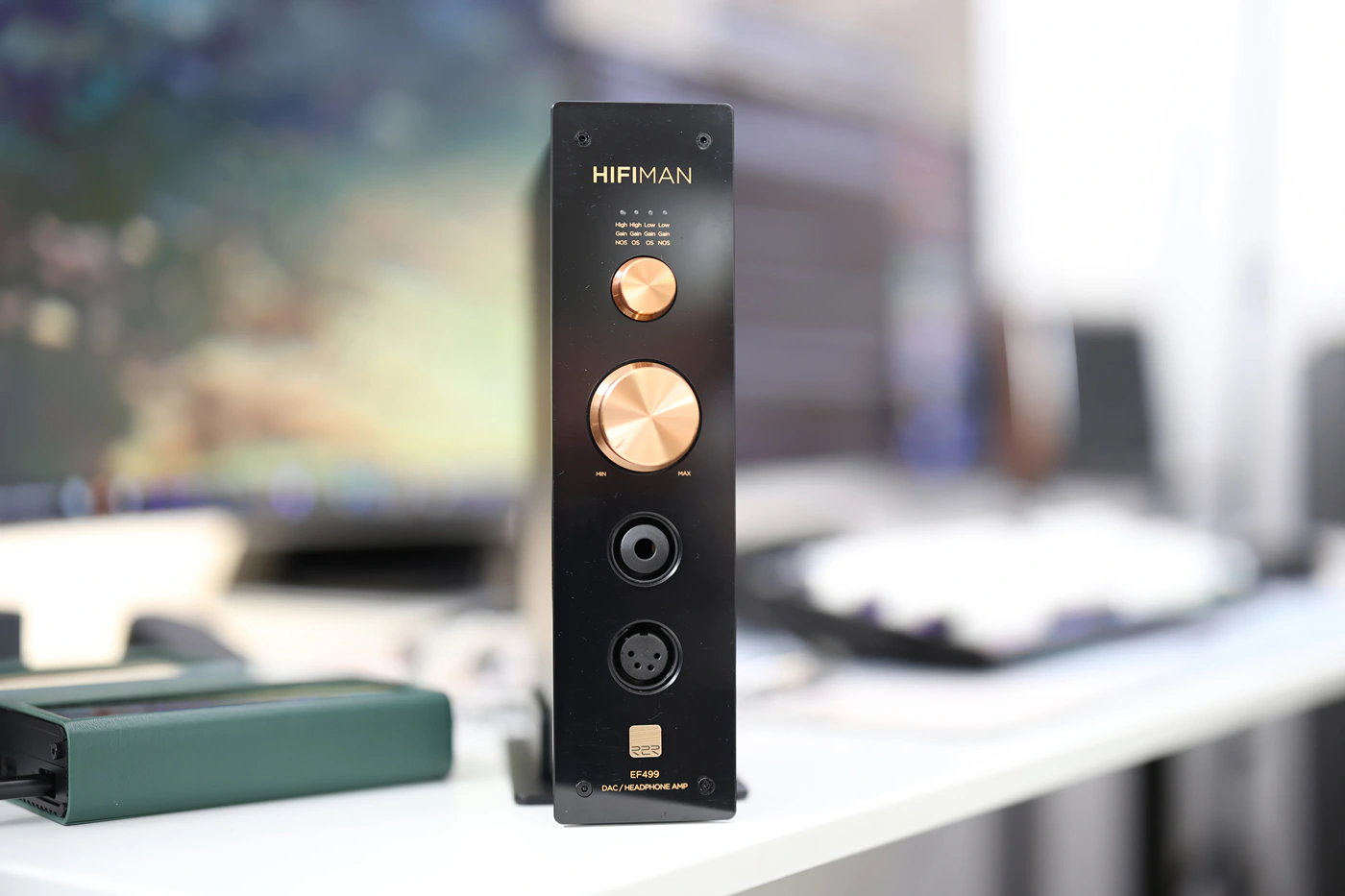
While you don’t have the 4.4mm balanced headphone output, you do have XLR, 6.35mm Single Ended, and also a good line out. EF499 ends up being really easy to recommend for its build quality, sonic quality and is one of the best DAC / AMPs you can grab for this price point.
Product Link
Amazon – https://amzn.to/3U6lRrj
Aliexpress – https://s.click.aliexpress.com/e/_DF08C8H
--- Please remember to stay safe, and always have fun while listening to music!---
- If you have a dime to spare, please donate, and help us! It would make the day brighter for me and my wife-
Full Playlist used for this review
We listened to more songs than those named in this playlist, but those are excellent for identifying a sonic signature. I recommend trying most of the songs from this playlist, especially if you’re searching for new music! The playlists are different for Spotify, Tidal and Youtube, and based on the songs I enjoy and are available on each!
https://www.youtube.com/playlist?list=PL_cjBXGmwSHSdGcwuc_bKbBDGHL4QvYBu
https://open.spotify.com/playlist/5J3oloz8Riy9LxEGenOjQ0?si=979ba4f082414be7
https://tidal.com/browse/playlist/330fd544-8e5b-4839-bd35-676b2edbb3d5
--- Contact Us ---






Does this compliment well with hifiman he1000 stealth?
Yes, the combo should work very well together!!